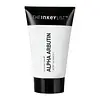What's inside
What's inside
 Key Ingredients
Key Ingredients

 Benefits
Benefits

 Concerns
Concerns

 Ingredients Side-by-side
Ingredients Side-by-side

Water
Skin ConditioningDipropylene Glycol
HumectantGlycerin
HumectantCaprylic/Capric Triglyceride
Masking1,2-Hexanediol
Skin ConditioningNiacinamide
SmoothingAlpha-Arbutin
AntioxidantMethyl Gluceth-20
HumectantPolyglyceryl-3 Methylglucose Distearate
EmulsifyingButylene Glycol
HumectantBetaine
HumectantHydrogenated Lecithin
EmulsifyingSorbitan Stearate
EmulsifyingTocopheryl Acetate
AntioxidantAmmonium Acryloyldimethyltaurate/Vp Copolymer
Carbomer
Emulsion StabilisingTromethamine
BufferingParfum
MaskingDisodium EDTA
Ethylhexylglycerin
Skin ConditioningAdenosine
Skin ConditioningCyperus Papyrus Stem Extract
Skin ConditioningPrunus Persica Fruit Extract
AbrasiveRosa Damascena Flower Water
MaskingAcer Rubrum Extract
Skin ConditioningOpuntia Ficus-Indica Flower Extract
Skin ConditioningPhyllanthus Emblica Fruit Extract
HumectantOzothamnus Diosmifolius Extract
Citrus Iyo Fruit Extract
EmollientCoral Extract
Skin ConditioningSodium Hyaluronate
HumectantWater, Dipropylene Glycol, Glycerin, Caprylic/Capric Triglyceride, 1,2-Hexanediol, Niacinamide, Alpha-Arbutin, Methyl Gluceth-20, Polyglyceryl-3 Methylglucose Distearate, Butylene Glycol, Betaine, Hydrogenated Lecithin, Sorbitan Stearate, Tocopheryl Acetate, Ammonium Acryloyldimethyltaurate/Vp Copolymer, Carbomer, Tromethamine, Parfum, Disodium EDTA, Ethylhexylglycerin, Adenosine, Cyperus Papyrus Stem Extract, Prunus Persica Fruit Extract, Rosa Damascena Flower Water, Acer Rubrum Extract, Opuntia Ficus-Indica Flower Extract, Phyllanthus Emblica Fruit Extract, Ozothamnus Diosmifolius Extract, Citrus Iyo Fruit Extract, Coral Extract, Sodium Hyaluronate
Water
Skin ConditioningButylene Glycol
HumectantPropanediol
SolventGlycerin
HumectantAlpha-Arbutin
AntioxidantDicaprylyl Carbonate
EmollientCaprylic/Capric Triglyceride
MaskingPhenoxyethanol
PreservativeHydroxyethyl Acrylate/Sodium Acryloyldimethyl Taurate Copolymer
Emulsion StabilisingCaprylyl Glycol
EmollientSqualane
EmollientPhospholipids
Skin ConditioningGlycine Soja Oil
EmollientCarbomer
Emulsion StabilisingPolysorbate 60
EmulsifyingSodium Phytate
Glycolipids
Skin ConditioningSorbitan Isostearate
EmulsifyingLeuconostoc/Radish Root Ferment Filtrate
AntimicrobialSodium Hydroxide
BufferingGlycine Soja Sterols
EmollientHyaluronic Acid
HumectantTocopherol
AntioxidantWater, Butylene Glycol, Propanediol, Glycerin, Alpha-Arbutin, Dicaprylyl Carbonate, Caprylic/Capric Triglyceride, Phenoxyethanol, Hydroxyethyl Acrylate/Sodium Acryloyldimethyl Taurate Copolymer, Caprylyl Glycol, Squalane, Phospholipids, Glycine Soja Oil, Carbomer, Polysorbate 60, Sodium Phytate, Glycolipids, Sorbitan Isostearate, Leuconostoc/Radish Root Ferment Filtrate, Sodium Hydroxide, Glycine Soja Sterols, Hyaluronic Acid, Tocopherol
 Reviews
Reviews

Ingredients Explained
These ingredients are found in both products.
Ingredients higher up in an ingredient list are typically present in a larger amount.
Alpha-Arbutin is made from hydroquinone and glucose. It may also be derived from the fermentation of soybeans.
This ingredient an antioxidant, meaning it helps protect your skin cells against damage.
Studies show this ingredient helps improve hyperpigmentation and fade discoloration.
Alpha-Arbutin may be used with other ingredients that help with hyperpigmentation. These ingredients include retinol, Vitamin C, niacinamide, and tranexamic acid.
Learn more about Alpha-ArbutinButylene Glycol (or BG) is used within cosmetic products for a few different reasons:
Overall, Butylene Glycol is a safe and well-rounded ingredient that works well with other ingredients.
Though this ingredient works well with most skin types, some people with sensitive skin may experience a reaction such as allergic rashes, closed comedones, or itchiness.
Learn more about Butylene GlycolThis ingredient is an emollient, solvent, and texture enhancer. It is considered a skin-softener by helping the skin prevent moisture loss.
It helps thicken a product's formula and makes it easier to spread by dissolving clumping compounds.
Caprylic Triglyceride is made by combining glycerin with coconut oil, forming a clear liquid.
While there is an assumption Caprylic Triglyceride can clog pores due to it being derived from coconut oil, there is no research supporting this.
Learn more about Caprylic/Capric TriglycerideCarbomer is a polymer of acrylic acid. Its main role is to create a gel consistency.
A high amount of carbomer can cause pilling or balling up of products. Don't worry, most products contain 1% or less of carbomer.
Glycerin is already naturally found in your skin. It helps moisturize and protect your skin.
A study from 2016 found glycerin to be more effective as a humectant than AHAs and hyaluronic acid.
As a humectant, it helps the skin stay hydrated by pulling moisture to your skin. The low molecular weight of glycerin allows it to pull moisture into the deeper layers of your skin.
Hydrated skin improves your skin barrier; Your skin barrier helps protect against irritants and bacteria.
Glycerin has also been found to have antimicrobial and antiviral properties. Due to these properties, glycerin is often used in wound and burn treatments.
In cosmetics, glycerin is usually derived from plants such as soybean or palm. However, it can also be sourced from animals, such as tallow or animal fat.
This ingredient is organic, colorless, odorless, and non-toxic.
Glycerin is the name for this ingredient in American English. British English uses Glycerol/Glycerine.
Learn more about GlycerinWater. It's the most common cosmetic ingredient of all. You'll usually see it at the top of ingredient lists, meaning that it makes up the largest part of the product.
So why is it so popular? Water most often acts as a solvent - this means that it helps dissolve other ingredients into the formulation.
You'll also recognize water as that liquid we all need to stay alive. If you see this, drink a glass of water. Stay hydrated!
Learn more about Water